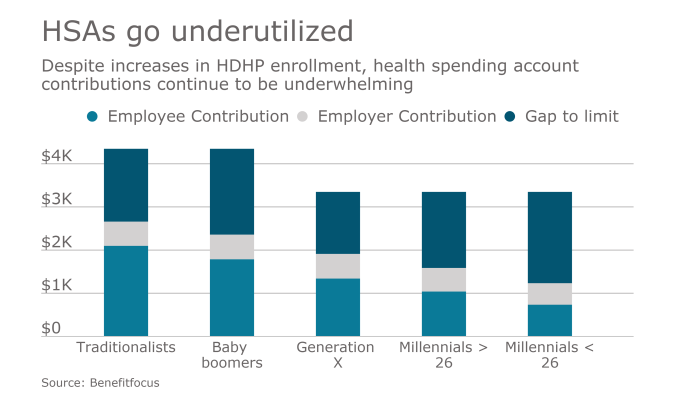
3 things employers need to know about Congress’ effort to expand HSAs
Health savings accounts are at the top of the health policy agenda as Congress grapples with how to rein in ever-rising costs. House and Senate committees have held several hearings over the past few months on how to expand HSAs and update the rules, and House on Wednesday just passed two healthcare bills containing a broad array of policy changes.
Although budget pressures have put limits on some reforms and the Senate outlook this year is dim, the proposed changes indicate the direction that many Republicans and more than a few Democrats would like to take. If you have suggestions and or would like to express support, now is a good time to let your members of Congress know, or work through employer advocacy groups in Washington D.C.
So, why should employers care about the HSA legislation, and what do they need to know? Here are three important things.
1. Many of the proposed changes affect how and when a person can contribute to an HSA and how the funds can be used and rolled over. These types of changes will require employee notification and communications as well as enrollment system/payroll changes, but will be relatively straightforward to implement. HSA account administrators will need to modify their systems for the new limits and additional services that are eligible for HSA use/reimbursement, and to track the source of funds.
2. One HSA expansion provision is not so straightforward — allowing HDHPs to cover up to $250 (self-only) and $500 (family) annually for non-preventive services that currently may not be covered pre-deductible. This will allow pre-deductible coverage for chronic condition treatment and telehealth services, for example.
It could also be challenging to administer. Will employers need to define a specific additional service, or multiple services, the plan will cover pre-deductible up to the limit? Could that be complicated by geographic variations in the cost of care? Or will plan sponsors stick to easy-to-define services: telemedicine consultations and medication for high blood pressure, high cholesterol and diabetes? Will the administrative complexities outweigh the benefit of the additional $250/$500? And don’t forget, this additional pre-deductible coverage will come at an additional cost. While it’s a small amount per person, it could add up quickly for large groups. Employer groups will continue to urge Congress and regulators to provide greater flexibility to cover more services on a pre-deductible basis.
3. As with most things, timing is everything. Let’s assume the Senate decides to pass this legislation and change the law. How late is “too late” to make changes for Jan. 1? If it is just a matter of employees being able to contribute more and get more things reimbursed, that could be fairly straightforward to implement. But it would be a real bummer to find out after you’ve completed all the work for a Jan. 1 open enrollment that plan design changes are needed and that those changes will have cost implications.
Best advice: Keep an eye on what Congress is doing. Communicate your preferences on this topic to your elected representatives. Chat with your insurance carrier and HSA vendor to see what they are thinking regarding how to define, and administer, the additional $250/$500 for non-preventive services pre-deductible.
